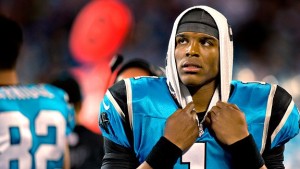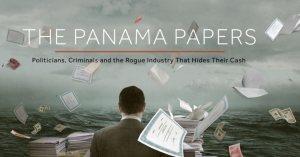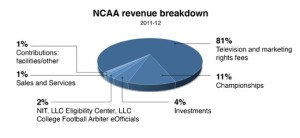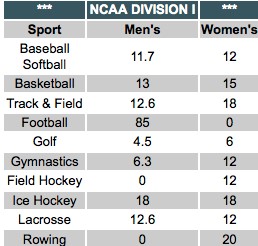Will Bradley-Villarini
Professor Barone-Phillips
WRT205
4/24/16
Race and Sports: Can Superman be Black?
Disclaimer for understanding: Cam Newton’s nickname is Superman based on a touchdown celebration that he performs where he pretends to rip open his jersey like superman does when he reveals his identity to go fight crime.
“To many whites, men of my vintage, men I knew, there was a sense that their game was being stolen. It was a very visceral racism.”- Frank Deford, NPR
Sports have been around for thousands of years in human culture. They date as far back as the early hundreds, or as long as military training has existed. Sport(s) is defined by dictionary.com as : “an athletic activity requiring skill or physical prowess and often of a competitive nature”. Many white athletes feel as if there are spots are being taken by African-American players or players of different races (the quote above from Frank Deford). It’s quite ridiculous to think that because the definition of Sport says that it “requires skill”, therefore, no matter what skin color you are, if you’re skilled then you should be playing. In the modern 21st century, the argument of race in sports is still very present and it has a history, especially in the last 100 years or so with events such as the Civil Rights movement. Football is a great example of the ever-burning flame of racism that still exists in sports for a few reasons.
Historically, the franchise players or “star players” on the football teams have been the quarterbacks. At the beginning of the 2015-16 NFL season, only 6 starting quarterbacks out of the total 32 were of color (19.2%). Cam Newton, the MVP quarterback that led the Carolina Panthers to an 18-1 record and a Super Bowl is the spotlight of this article due to the attention he brought to the issue of racism in football. His unique set of skills, arrogance, and impressive dancing extracted a lot of hatred from white America. The issue of racism in sports is very present to this day, I’m going to cover the history of racism in sports and compare it to Mr. Newton and his story in the current time of 2016.
I personally believe that racism is currently alive and well in sports, especially in football. It’s not good for American culture along with sports and the industry as a whole. The sports industry in the United States makes $495 billion yearly, making it one of the biggest contributors to the U.S economy. If racism keeps causing debates in the sports world then it will continue to move backwards.
When looking into the history of race and sports it is crucial to look at the statistics of when players of color graced the field for the first time in each major sport. The NFL’s first black player was Marion Motley back in 1946. The MLB’s first was Jackie Robinson in 1947. And finally, the NBA’s first player of color was Chuck Cooper in 1950. Based on those statistics, there were exactly 0 players of color in America’s most popular sports before 1946. That statistic is baffling without a doubt and it’s concerning as well. Scientists from Smith College believe that this absence was due to a couple of factors. The reasons surround the idea that minorities are different from whites and that they are “inferior”. The first reason that Smith College gave was in regards to physical prowess. The belief that African-Americans have a physical superiority (running faster, jumping higher, increased reflexes) is “closely yoked to an anti-intellectualism that permeates black male culture” (Smith College, Page 2). This ideology of physical inequality leads to the caucasian player creating more inequality because of their resentment toward their own personal abilities. That comparison correlates with another discriminatory categorization of African-Americans by saying that they’re also not as “intellectual” as the white players. These ideologies are poisonous and they are still prevalent today.

Cameron Jerrell Newton is a 26 year-old black male who is going into his 6th season as the starting quarterback for the Carolina Panthers. In the 2015-16 NFL season, Newton led the Panthers to an 18-1 record, even adding a Super Bowl appearance. The Panthers were the favorites to win after a dominating season, however, the Denver Broncos’ unbreakable defense ruined what could have been a legendary season for Newton and the Panthers franchise. Newton received flack as the season progressed for a handful of reasons and he took it as an issue of racism. Newton came out in an USA Today article to say “I’m an African-American quarterback that may scare a lot of people because they haven’t seen nothing they can compare me to”(USA Today, Gluck). What makes Newton so “incomparable” is his ability to be dangerous both in the air and on the ground. Standing at 6’5” and 245 lbs., Newton was able to rush for 636 yards and 10 touchdowns, an incredible statistic for a QB, as well as throw for 3,837 yards and 35 touchdowns. Newton ended the season with a QBR of 99.4, a number viewed as off the charts, and earned the title of MVP. Cam saw the issue as White America being threatened by him because he was putting up Tom Brady-like numbers. However, the problem here is that Tom Brady is white and Cam Newton is black. In Cam’s eyes, that means that people are resorting to stereotypes and discrimination because a black man is putting up amazing statistics in a predominantly white position. Throughout history, the franchise player of NFL teams have been the quarterbacks. Charles K Ross, a professor and author on black culture’s input on this topic was stated as : “Who was going to be the face of your franchise and your product? A white man” (New York Times, Powell).
Some of the other aspects that make Newton a “threat” refer with how he behaves on the field. If you are familiar with Newton’s story, or if you have ever watched him play then you would know that the quarterback loves to dance, and perhaps too much. After every first down, every touchdown, and pretty much after any successful play, one can find Newton “hitting the dab”. The dab is a dance move where the person bends their head into the bend of their elbow in a swift motion. This dance was introduced to the public thanks to the Atlanta based rap group “Migos”. During a game against the Tennessee Titans, Newton rushed for a touchdown and proceeded to celebrate for around 15 seconds. His dancing was so extra that a defensive lineman by the name of Wesley Woodyard ran up to him in anger, followed by the referee running over to break the altercation up, however, Newton kept going even as the ref yelled and pushed him away. In the post game conference Newton addressed the altercation. He explained how someone told him that they weren’t going to let him “hit the dab” anymore and he swiftly followed up by saying: “If you don’t like it, then don’t let me in (the end zone)”(Cam Newton, ESPN). That statement comes across as pretty arrogant and it is understandable why that would enrage someone who is quick to rush to stereotypes, but Newton isn’t incorrect. Newton’s celebrations got Seattle Seahawks fans so mad that they started a petition to ban Newton from their stadium. Another on-field activity that Newton likes to partake in is the distribution of footballs to young fans after he scores a touchdown. Many spectators see Newton’s actions as distracting and time wasting. The fact that giving a ball to a kid that can’t be older than 10 years old can make somebody mad shows how easy people rush to barrage Newton and his image.

Warren Moon, a legendary black quarterback went through a lot of the same hardships as Cam Newton, leading him to mentor the young QB in his time of need. Moon started in the NFL in 1984 as one of the first black starting quarterbacks in the history of the game. Moon broke plenty of boundaries, however, he was very talented and deserved to play. He received a lot of hateful comments and death threats which makes one wonder how bad it must have been back in the 80’s compared to 2016. It made complete sense for Moon to mentor Newton and he had a lot of choice words about the NFL and racism along with advice for young Newton. In a recent article for the New York Times, Warren referred to the black players roles in the NFL by saying : “We were good for the athletic, reaction positions: run, jump, block” and followed up by saying : “ I felt like I was going out there half the time representing my race as opposed to representing my team and teammates”.(New York Times, Powell) These words by the legendary player proved very powerful. The difficulty of having to focus on representing your race in a sport instead of your team really exemplifies the importance of racial difference in sports at that time. Moon went on to explain that if he hadn’t been focusing on representing his race the whole time then he would have had an even better career.
Charles K. Ross, a history professor at the University of Mississippi and the author of “Outside the Lines: African-Americans and the Integration of the National Football League “ had some thoughts on the NFL from what he had learned throughout his career as a researcher of black culture. Ross analyzed that the franchise players have historically been the quarterbacks, and white ones at that. Therefore the business of the NFL and their teams’ money makers have historically been a white man in the pocket with the ball, with no room for a black man to take the helm. That reason led Ross to say : “Football was not ready to move into the 21st century”. (New York Times, Powell) The reason for saying that is because there were so many great talents of color that were ready to come into the NFL but the business model of the NFL as a corporation would get in the way of that.
Brandon Marshall, a wide receiver for the New York Jets holds a different position on the Cam Newton debate. Marshall stated : “I don’t think it’s racial. I just think that there’s a box that we put our quarterbacks in and we say, ‘This is how you’re supposed to be” .(New York Daily News, Walder) Cam Newton is definitely a unique character. He’s loud, wears crazy outfit, and loves “dabbin” all over the place so it makes that he doesn’t fit the description. However, he then continued to say: “This is how Peyton Manning did it, this is how Joe Montana did it, Tom Brady, so you do it the same way”.(New York Daily News, Walder) Marshall coincidentally compared Cam to three of the most famous white quarterbacks in the NFL who are cardboard cutouts, in a sense that they all act in the same quiet and “professional” way.
I do not see why dancing and crazy outfits would make people so mad if it weren’t a race thing. If Tom Brady did the same things would everyone really be mad? I don’t think so, I think that the white fans would eat it up and that the African-American community would be the ones taking offense to it, once again making it a race issue. No matter what direction it travels, this seems to be a race thing.
Racism in U.S sports needs to be addressed publicly. There needs to be a campaign to end the problem, because it’s taking away from the entertainment of the sports and the consumers who keep the industry alive. A great example of a campaign to end racism is in Fútbol, better known as soccer in the United States. As some might know, soccer is the most popular sport in the world. There are an estimated 2.2 billion fans in the soccer world. There have been campaigns worldwide and even in the MLS (Major League Soccer, the American soccer league) to try and combat racism in the “beautiful game”. These campaigns go by the names of “No to Racism” and “Fútbol for Hope”. They have millions of supporters and are successfully moving to eliminate racism by increasing public awareness of intolerance and discrimination in fútbol, as well as developing ideas and strategies on how to fight them.

This movement is fantastic for the fight against racism, but why aren’t America’s most popular sports taking actions like these to combat racism? This issue is huge and it is changing the game. These actions are surely being taken in some form by the NFL, however, if a corporation as powerful and wealthy as the NFL hasn’t even attempted to create a campaign as dynamic as European Fútbol has, then some questions could be reasonably asked. Maybe it’s because the other big corporations linked with the NFL are against it, or maybe it goes against their business ideas. Nobody really knows, but something needs to happen because we can’t keep living like the world was 100 years ago, as well as ignoring the issue as a whole.
Cam Newton is a great delegate for this everlasting issue because his story is relevant and shows the true colors of some people in American sports today who still see pigmentation as a dividing factor. Everyone is subject to their own opinions, however, I see this as a real matter of discrimination by White America who feel like all of the white players are being kicked out of sports. I can see why that would enrage some but lets go back to the definition of sport. It clearly states : “ an activity requiring skill or physical prowess”. If you are more skilled, black or white, then you deserve to be playing. The better you are, the more interesting the sports will become. People need to stop caring about the skin color who is taking who’s spot and start realizing that the better players are the ones making the sports that they love so dearly more amazing.
If you’re from Philadelphia and you’re an Eagles fan, whose team happens to be entirely filled with black players (or white, or mixed) and you win the Super Bowl, then there should be no problem at all. Your team was the best, that is all. Other teams, and their supporters shouldn’t decide it’s because their kicker is white or “It’s because their defense is full of big black guys”, they should applaud them because they were the best. Hate them for being good, be jealous, just don’t make race the issue to throw your stereotypes at.
The sports world is filled with stereotypes, jealously, hatred, and idiocy. We need to come together as a country to enjoy the sports that we love and not argue over other pointless issues that really don’t have anything to do with sports. People are getting mad because they feel insecure or because they need someone to blame, so why not go with the classic “blame the black guy” approach from 200 years ago? The sports industry is important to the economy and to the enjoyment of the hundreds of millions of viewers that keep the industry alive. Stop worrying about whose playing in the games and start worrying about whether your team will have a good season or not.









